Below are some recent photographs I took near Mohonk Mountain House near New Paltz, New York. All pics are linked to iNaturalist observations if you have a comment or would like to correct my identification (thanks in advance).

I think this is Dermatocarpon luridum (brook stippleback lichen). Apparently subaquatic, so one only finds it in locations that are always wet. This clump was growing on the vertical face of Shawangunk conglomerate. It’s sometimes called “brook stickleback lichen” but shouldn’t be (that’s just a typo). More details here.
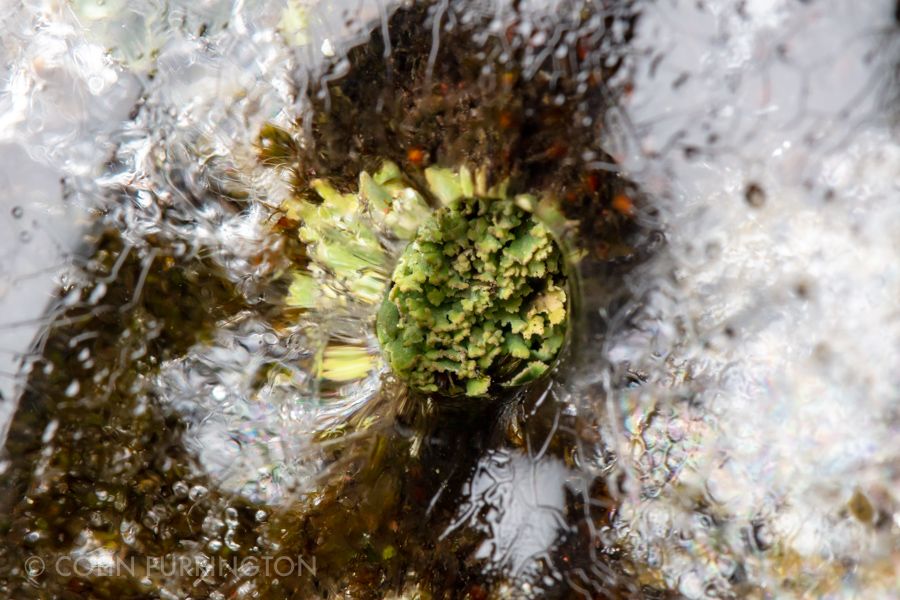
Another lichen (species TBA) peeking though ice.
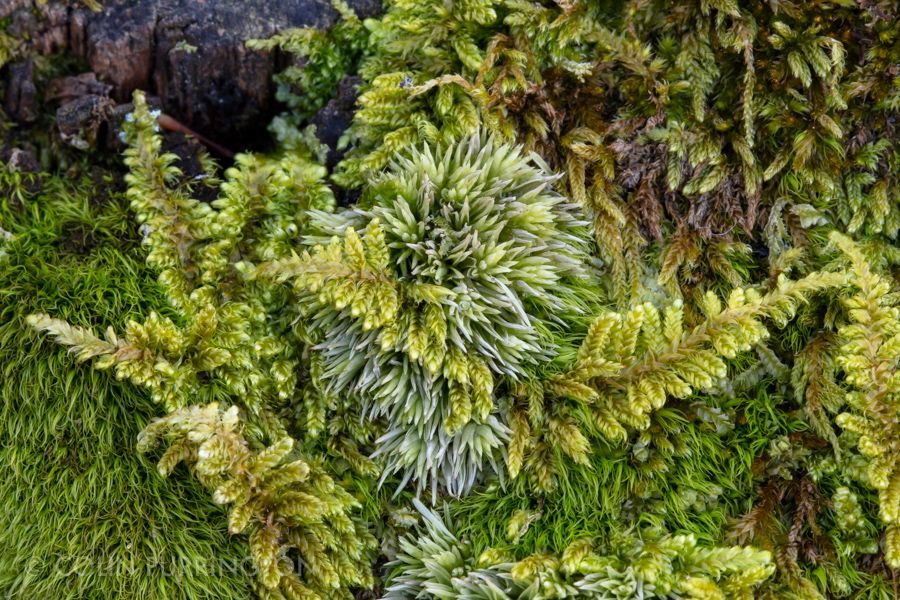
I liked the diversity of bryophytes in this clump so thought I’d try my hand at identifying them. The central puff is, perhaps, Leucobryum albidum. There’s another species in the genus, L. glaucum, but I think that has longer leaves. The ferny-looking one is possibly Hypnum imponens (brocade moss). And, finally, that wispy moss could be either Dicranum fuscescens (dusky fork-moss) or D. scoparium. Mosses are hard, and there are apparently 177 in the Shawagunk Mountains (Tessler et al. 2016).
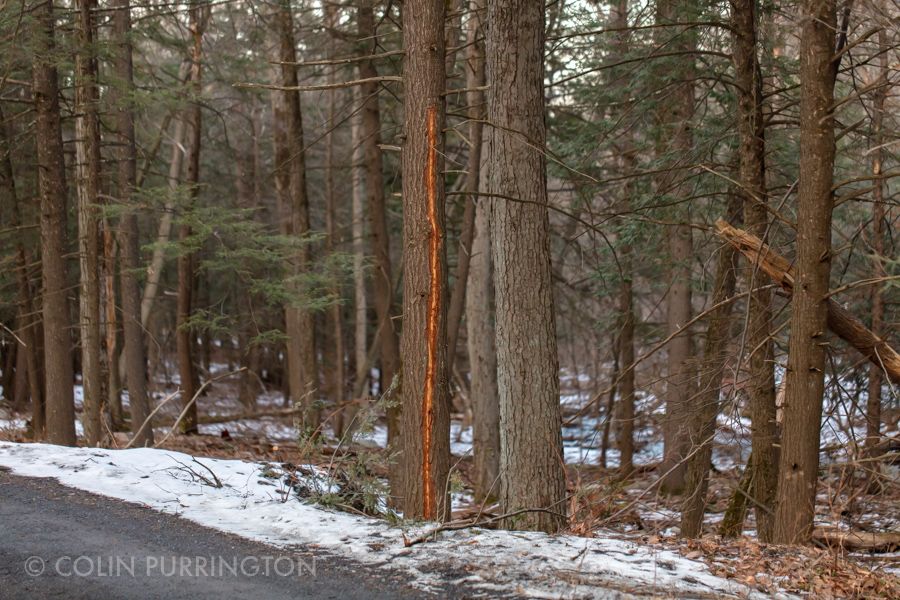
Some sort of conifer that had been hit by lightning. I looked around for the bark that had been blown off but couldn’t find it. It’s interesting there are no scorch marks. I gather that the explosion can launch bark at bystanders, which is another good reason not to hide under trees during an electrical storm. Fun fact: I’ve been hit by lightning. Actually, that wasn’t fun.
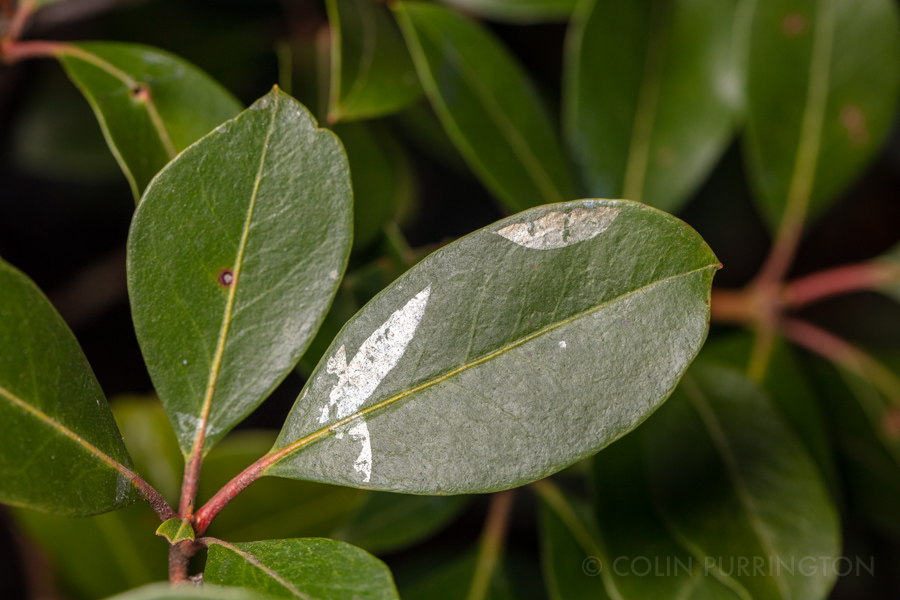
I think the white areas on this Kalmia latifolia (mountain laurel) are where the waxy layers of the leaf have separated. Which doesn’t seem like a good idea so I’m curious why this was so common — every plant had dozens of leaves with similar spots. Frost damage, perhaps?
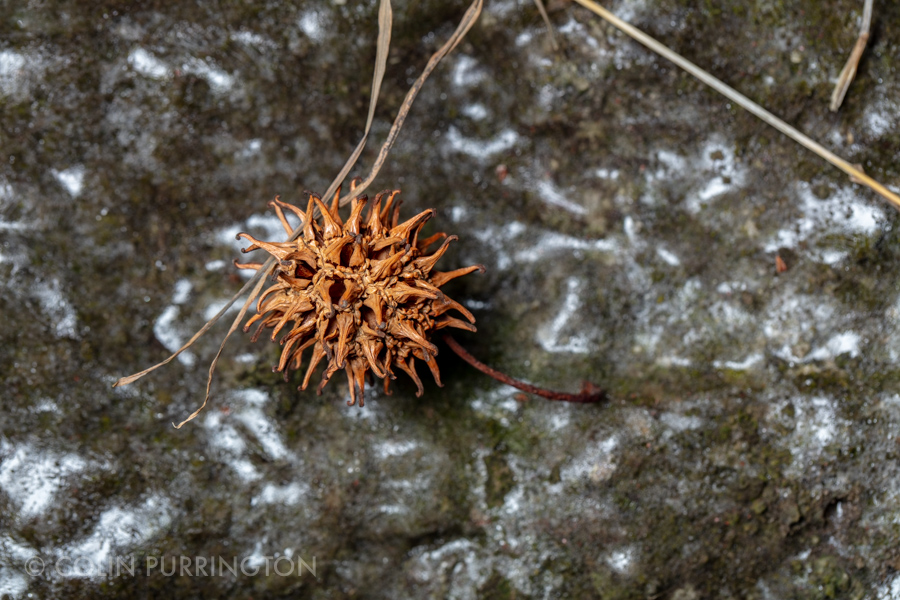
Just a fruit from Liquidambar styraciflua (American sweetgum). Very common, this one was more photogenic than usual because of the ice.
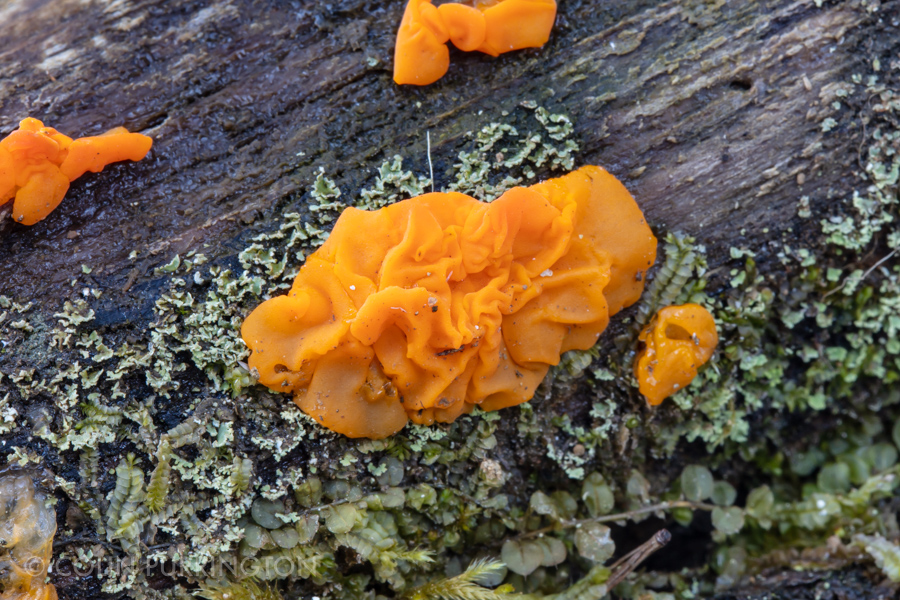
I’m pretty sure this is Dacrymyces chrysospermus (orange jelly spot) because it was growing on a dead conifer that had no bark. This saprobic species is often confused with the parasites Tremella aurantia and Tremella mesenterica, both equally colorful and gooey but which grow on (=eat) Stereum hirsutum and Peniophora spp., respectively (see Overall 2017). Identification of Tremella species can be tricky because their hosts are not always visible. And, sometimes, a jelly can be found near both Stereum hirsutum and Peniophora, in which case you’d need to examine spores to figure out which Tremella you have. If you want to read more, Thomas Roehl has a great post.

I think this is Trichaptum biforme (violet-toothed polypore) but I’m not confident because it’s the first time I’ve encountered the species. I’m fairly confident of the genus because of the toothy underside, but I guess it could be Trichaptum abietinum, instead, if the host is a conifer. I don’t think it’s Trametes versicolor (turkey-tail; has pores) or Stereum hirsutum (false turkey-tail; smooth underside) but those two were my first guesses.
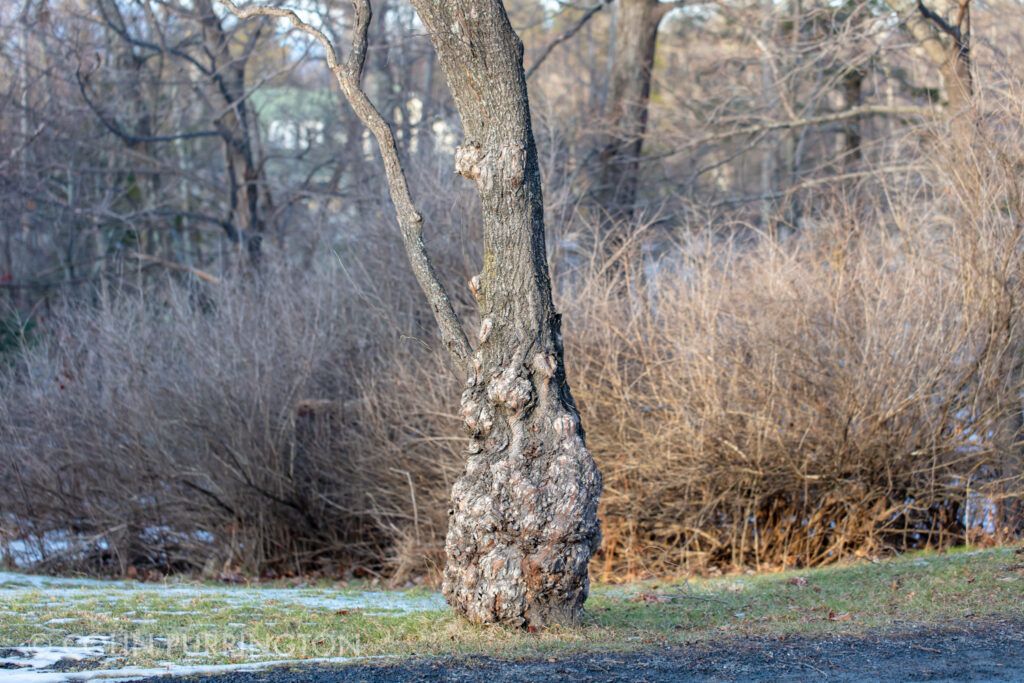
I’ve eyed this sad-looking Salix matsudana (Chinese willow) for years and wondered what disease it might have. My current guess is Agrobacterium tumefaciens (crown gall) but fungi can cause cankers, too.
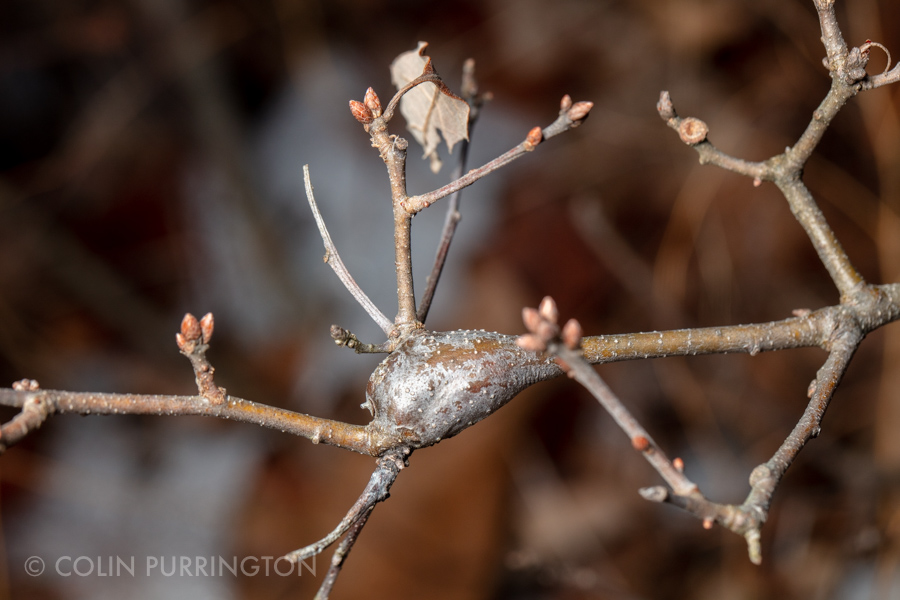
This took me forever to identify so I’ll be sad if I’m wrong:
Zapatella quercusphellos (formerly Callirhytis quercussimilis). Here’s the BugGuide page. I know it’s not an amazing photograph but I just love Cynipidae. There were thousands in the area.

I think this is a wolf spider (Lycosidae), perhaps something in the genus Pardosa. That ID is based on overall look but especially on the eyes (I rely on this page heavily). In years of walking on the snow looking for something to photograph, spiders are far more common than insects so I tend to adjust my search image to look for spiders, not insects. There’s even a large literature that explores how spiders survive (e.g., Murphy et al. 2008).
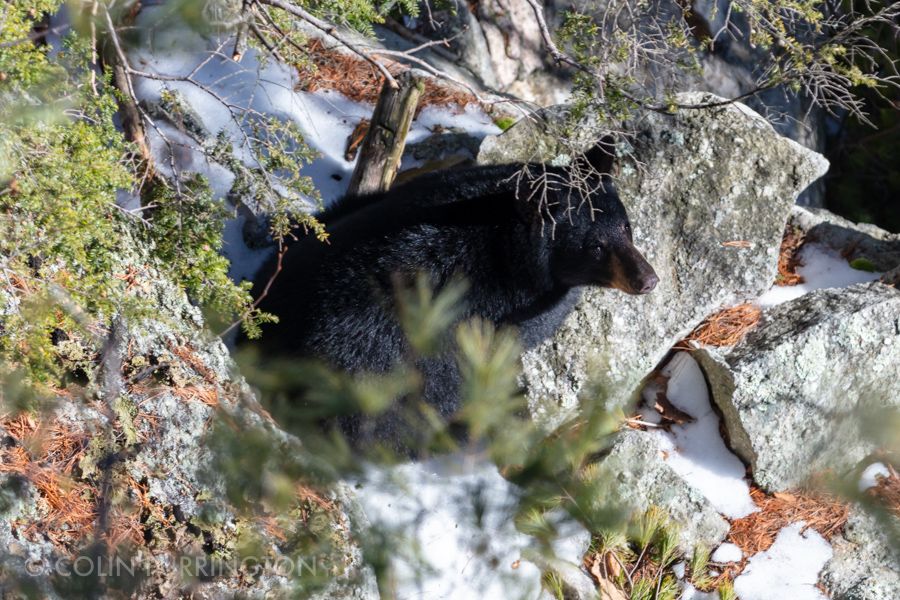
This is an American black bear (Ursus americanus), the only bear species in the area and thus easy to identify. I used a 70-200 mm lens with an attached 1.4x extender, then heavily cropped the image. So not as close as it appears, which is really just as well. It didn’t look amused.
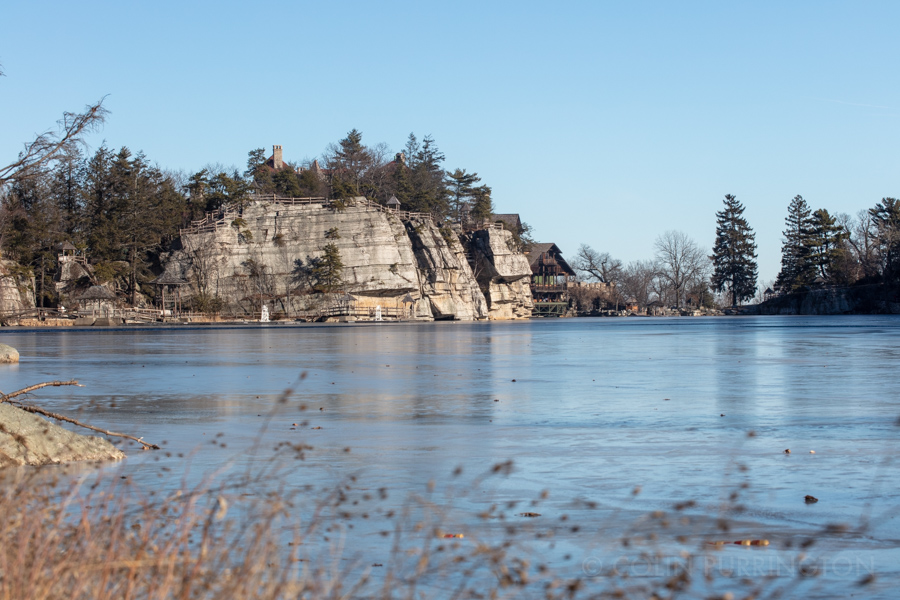
More photographs from Mohonk Mountain House are here.

Very glad to receive this. Love Mohonk and the Smileys.
And the food … it just gets better every year.